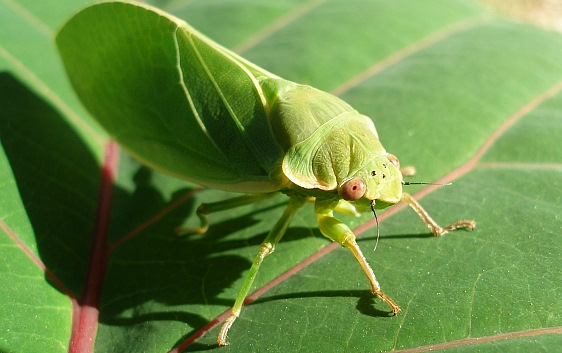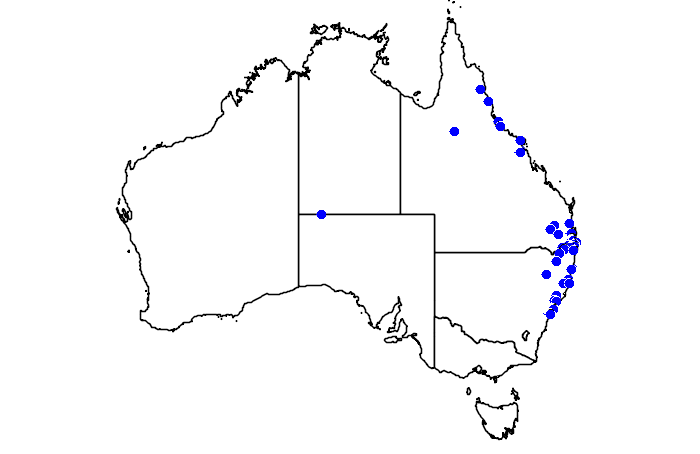Behaviour
Call
A distinctive, deep, frog-like sound produced by the male to attract a female. It is made around dusk and lasts for up to 30 minutes.
Diet
Sap from a range of plants, including eucalypts and grasses. The cicada pierces the surface of plants with its mouth to suck out the sap.
Movement
A poor flyer that will fly only short distances. It gains some protection from predators (such as birds) by confining its activity to dusk.
Breeding
Mating occurs from September. The female cuts small slits in the branches of a plant into which she lays her eggs. The eggs hatch into nymphs, drop to the ground and burrow into the soil where they feed on sap in the roots of plants. They remain underground for several years (possibly six or seven!) until fully grown, then emerge as adults at night from September. They climb up trees and shed their complete brown shells before flying off to find mates. After so long underground, they live for only a few weeks more.
Field Guide
Improve your identification skills. Download your Bladder Cicada field guide here!





